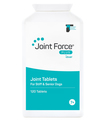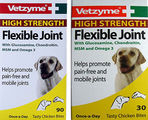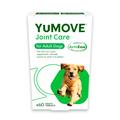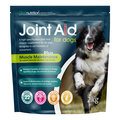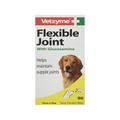Staying active is important for any animal, regardless of age. That being said, the exercise needs of your pet will vary throughout its life and you may find that as they age, they are less tolerant to exercise and actually need less of it. Staying active and mobile is still essential to maintaining a healthy lifestyle, however.
How do I know how much exercise my pet needs?
Dogs and cats slow down as they reach their senior years, much like humans. They may be less interested in play or show signs of struggling on longer walks or during periods of high activity. What is important is that you take cues from your ageing pet and don't push them beyond their limits.
- If you notice changes, visit your vet
Regular health checks are vital throughout your pet's life. As they age, you will start to notice changes and some of these may be cause of concern, which is why paying a visit to your vet is recommended. Your vet will be able to advise on any joint issues, check your pet's weight and range of motion, as well as all their other vitals. They can also give tips on exercise and how you can work it around your senior pet's individual needs. Sometimes changes aren't related to natural ageing and are actually indicative of illness, so keep this in mind and always seek the advice of a professional.
- Adjust exercise to your pet's needs
Routines are great and incorporating some exercise into your everyday is important, but continuing the same routines irrespective of your pet's changing needs, isn't recommended. That hour long walk your dog used to enjoy may need re-thinking as they get older and start to struggle with their mobility and energy levels, so be flexible and pay attention to how they're coping during periods of activity. Similarly, intense games of tug that you used to enjoy with your dog may need adapting for the older pet, and it's important you make allowances for them where you can.
Pets that struggle with their mobility are prone to weight gain, so keep an eye on this and speak to your vet if you need to help them shed the pounds but in a safe way. Low impact activities such as swimming, may be preferable to a run out in the park. Exercise inside may also be sufficient and don't overlook the importance of maintaining mental stimulation.
- Consider the weather
Older animals are much more sensitive to heat and cold, so consider this before you step out. Some dogs may need a jacket during the winter months to improve their comfort. During summer, avoid the hottest parts of the day and exercise in short intervals so your pet isn't put under strain.
- Adapt the home & consider supplements
Older pets can really benefit from having ramps in the home to help them get about. Giving them that helping hand onto the sofa, for example, will also support their ageing bones and joints and minimise the risk of injury. Likewise, a ramp into the car will prevent any jarring of the body and ensure they're best placed for that next adventure. For some pets with really limited mobility and other issues, you may need to incorporate a supplement into their daily diet. Lots of older pets find a joint supplement such as Joint Force to be beneficial, but speak to your vet first and take their advice on the best course of action.
As ever, if you have any concerns about the health or wellbeing of your pet, speak to your vet as soon as possible. Our team is always on hand to assist where we can, so feel free to reach out with any questions you may have, whether about suitable products for your older pet or obtaining prescription medication. We are here to help!
Written by: Hannah


